August 7, 2025 | 08:38 GMT +7
August 7, 2025 | 08:38 GMT +7
Hotline: 0913.378.918
August 7, 2025 | 08:38 GMT +7
Hotline: 0913.378.918
Over the past two decades, the masterpieces of hanging reservoirs have served as vital irrigation structures, helping to alleviate drought in the water-scarce highlands of Dong Van-Meo Vac.
Each journey to former Ha Giang – new Tuyen Quang always evokes renewed feelings, never the same as before. As early winter sets in, the buckwheat fields begin to bloom, tinting the plateau with delicate shades of pale pink and lavender. When these hues stretch across the hillsides, they form a magical tapestry of color. The cold grey rocks seem less harsh, and the human heart feels less lonely.
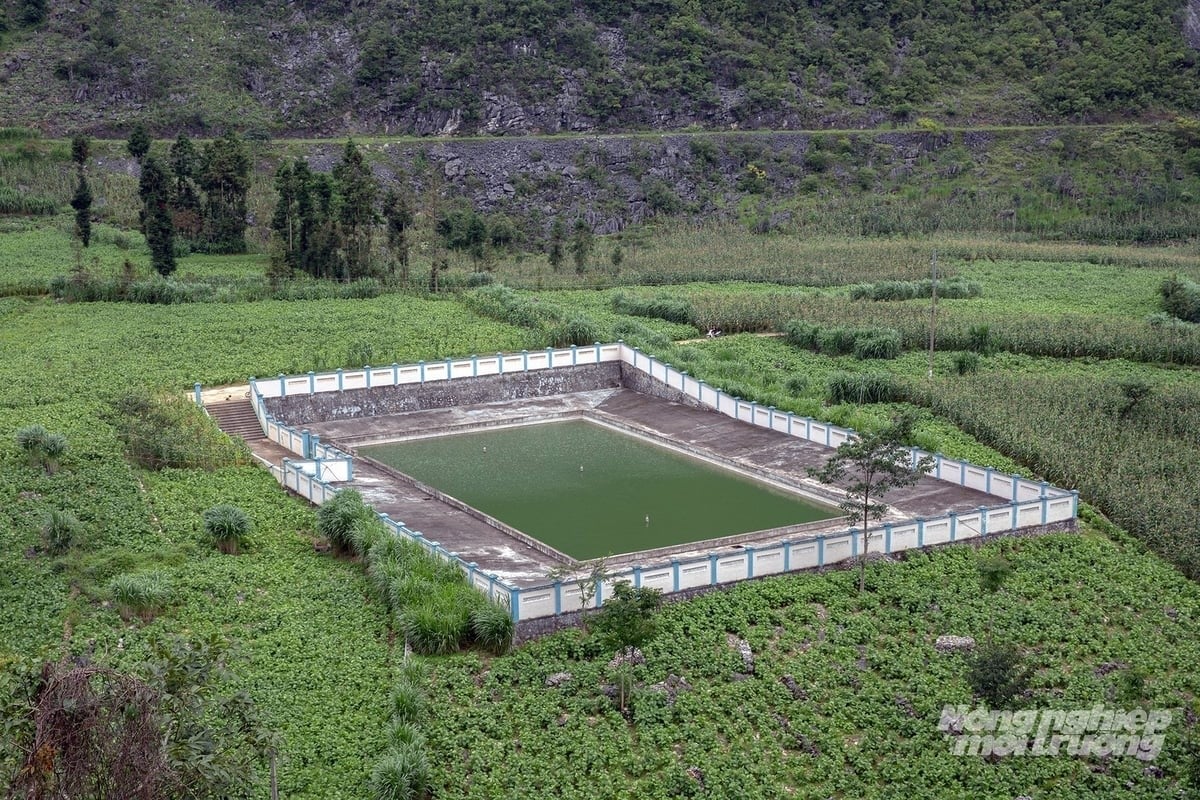
A hanging reservoir nestled in a picturesque valley of Sung La. Photo: Khuong Trung.
In spring, peach blossoms burst into crimson across the valley. A solitary mountain peach tree stands precariously on a rocky outcrop, blushing red on its own and glowing on its own. And spring, right on cue, returns once more.
In summer, the cornfields rise in waves of green across the misted grey slopes of karst rock. When the corn stalks have yet to grow taller than a person, each young base is a herbaceous population, including green peas and a pumpkin vine with a handspan-length stem and its tip wandering in search of something to cling to. Or three tender flax shoots, freshly sprouted, break through the soil and nestle close to the rock.
In autumn, patches of vibrant color compete for space along the forest's edge: trees turning golden or crimson, ancient trees with two-toned leaves in which their upper surfaces shimmer like they have been silver-leafed while the underside carries the brown of earth itself. Together, land and sky collaborate to paint a natural masterpiece, one whose palette no famed painter could ever truly replicate.
Within this four-season panorama, somewhere—anywhere—at any time, as your feet touch the land of Quan Ba and prepare to ascend the once-feared Sam Pun Pass (now flattened and lowered, its perils reduced to memory), you enter the rocky plateau. From Quan Ba, through Yen Minh, then Dong Van and Meo Vac, the stone landscape stretches endlessly, tracing onward toward the Ma Du–Bac Me route. Occasionally, a glimpse of the Nho Que River emerges, with its wild turquoise hue unmistakably distinct amid the mountains and forests.
And amidst this overwhelming sea of rock, rare freshwater reservoirs appear, lying neatly within a small valley, always in the most strategic location: near bustling villages, close to where mountain springs and streams converge and trickle down from all sides.
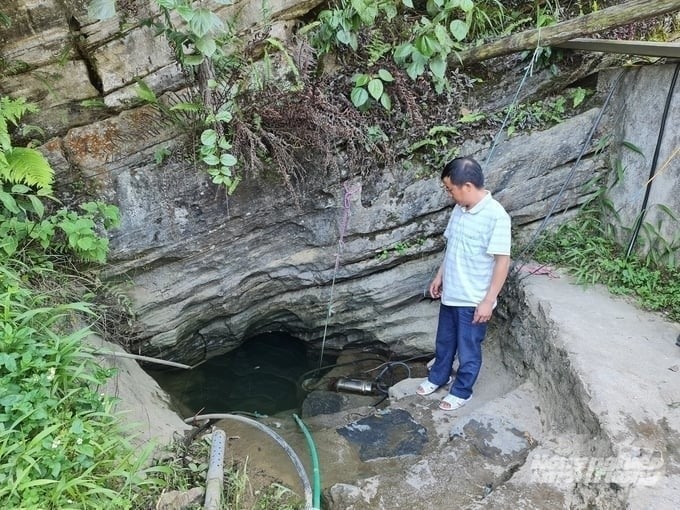
A natural water spring tucked in a rock crevice in Ha Ia hamlet, Can Chu Phin commune, is used by locals for daily consumption. Photo: Kien Trung.
Around these reservoirs, vegetation is always much more lush and green. Some are perfectly square, like the one in Pai Lung; others are rectangular, like the hanging reservoir in Sung La. There is also a crescent-shaped one in Sa Phin commune, on the road to the Vuong Family Mansion, and a polygonal reservoir in Thai Phin Tung commune, bordering the Moon Rock Field.
To the indifferent observer, the hanging reservoirs might seem unnoticed, as every region has its natural or man-made lakes, designed to store or reserve water. But those who truly understand Ha Giang and cherish the rocky plateau will dig deeper and be moved to admiration. Creating an artificial reservoir in this famously dry region is a political commitment, a testament to human perseverance. It required relentless effort with sweat pouring into transporting every load of stone, carrying each sack of cement on people\'s backs, and hauling every container of water to construct these hanging reservoirs. Once completed, the reservoir stores freshwater during the rainy season, becoming a precious source of supply during the dry months.
On the rocky plateau, arable land is extremely precious. For thousands of years, generation after generation, the Mong, Dao, Giay, Nung, and Xuong people have passed down the knowledge of how to gather handfuls of soil into rocky crevices, creating terraced cornfields across the vast rocky mountains.
However, for plants to grow, flower, bear fruit, and form full ears of corn, water is even more essential. In this rocky land, water is as rare and precious as soil. On the karst plateau, water is even more valuable than soil.
The initiative to build hanging reservoirs on the Ha Giang rocky plateau was first pioneered by Dr. Vu Cao Minh of the Institute of Hydrogeology. In the early 2000s, Dr. Minh devoted significant time and effort to a scientific study focused on drought mitigation strategies for the rocky plateau. Among the many proposed solutions, he chose the "hanging reservoir" model. Around 2002, the first pilot reservoir was constructed in Sa Phin commune, the heart of the Dong Van Karst Plateau Geopark.
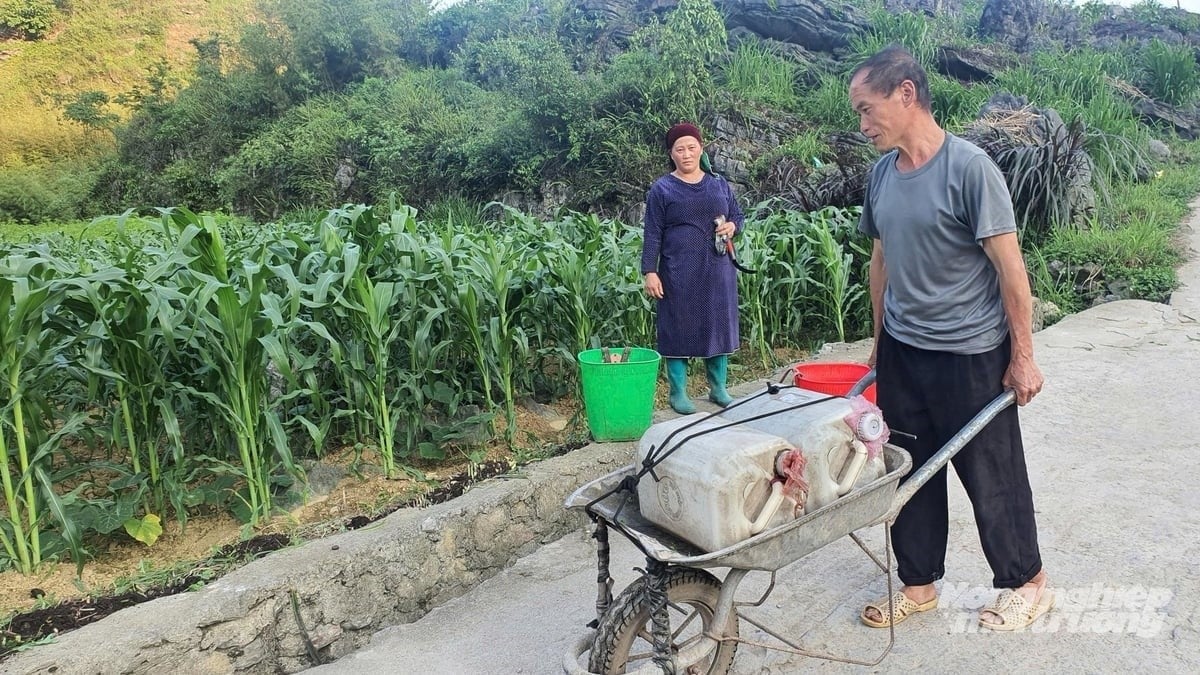
A Mong couple in Ha Ia hamlet carries home two cans of water for daily use. Photo: Kien Trung.
In 2007, five years after the pilot project was launched, Prime Minister Nguyen Tan Dung visited Ha Giang on a working trip and personally inspected the hanging reservoir model. He concluded that it was a practical and effective solution, well-suited to the rocky terrain, and should be replicated more widely. He subsequently approved the construction of 30 additional hanging reservoirs in the province.
The four former western rocky districts of Ha Giang, including Yen Minh, Quan Ba, Dong Van, and Meo Vac, have long been known for drought, with severe shortages for both domestic and production water. Each year, local residents can only proactively access water during the rainy season, which lasts for four months. The remaining eight months, stretching until March of the following year, are marked by severe drought, meaning seven out of twelve months fall within the dry season.
Although the region receives a relatively high average annual rainfall of 1,770 mm, its steep, mountainous terrain and bare rock offer little capacity to absorb or retain water. As a result, annual evaporation reaches up to 700 mm, according to data from the Pho Bang meteorological station. Border communes such as Son Vy and Thuong Phung (in the former Meo Vac district) are particularly well-known for drought and water shortages.
To cope with droughts, residents often collect water directly from natural sources such as ponds, lakes, streams, and creeks, without any treatment, which poses serious risks to safety and hygiene. In areas with access to groundwater, people dig boreholes or build household-scale storage tanks. This practice is common in several communes, such as Lung Phin, Can Chu Phin, Mau Due, Thanh Van, and Quyet Tien. Some households also build rainwater tanks or accumulate water in jars or plastic cans.
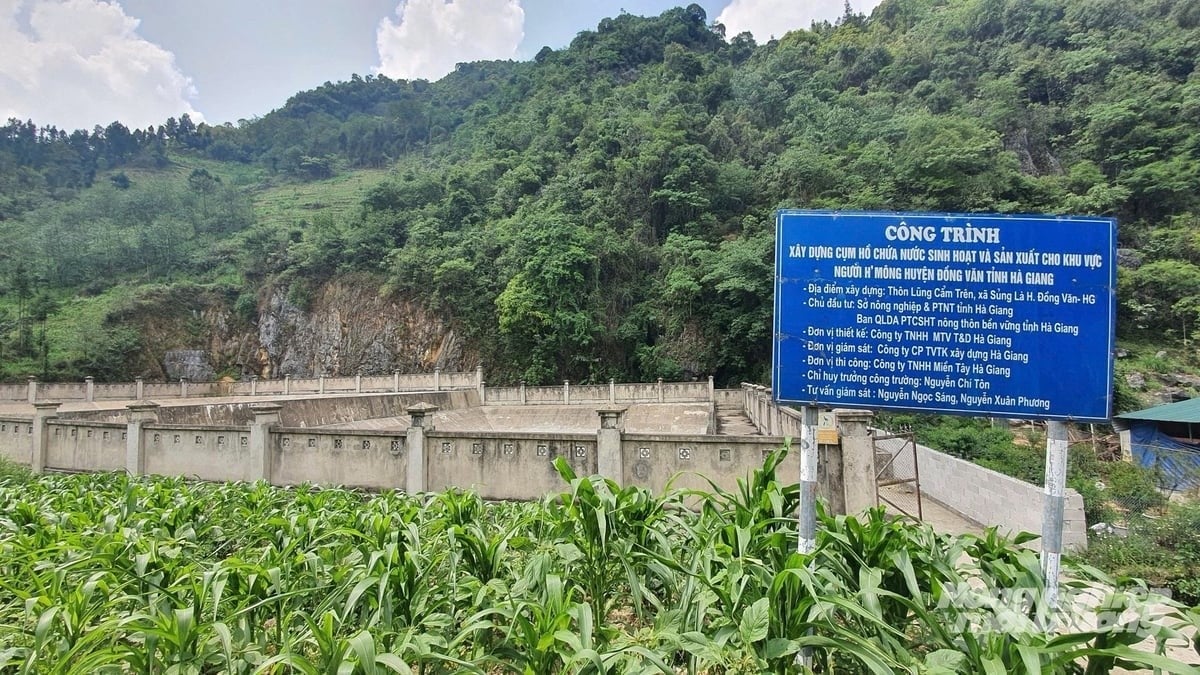
A hanging reservoir in Lung Cam Tren hamlet, Sung La commune, bears a solemn plate as a symbol of local pride. Photo: Kien Trung.
Since the first hanging reservoir was built in 2002, the rocky plateau has carried out a project to construct hundreds of artificial reservoirs across dry areas. Constructing reservoirs is carefully planned based on the topography and geological conditions at the selected construction site, with consideration given to appropriate scale, structure, and construction costs.
Another critical factor is ensuring that the reservoir\'s capacity meets actual water demand, based on projected population figures, including reserves for future needs and average per capita water consumption standards.
Another important consideration is that the design and construction of these reservoirs must pay close attention to both quality and aesthetics. The entire rocky plateau - geopark is a natural heritage bestowed by nature, recognized and honored by UNESCO. It would be unacceptable for any artificial, concrete-built structure to appear like a careless drawing that mars a flawless masterpiece refined over thousands of years.
Translated by Thu Huyen
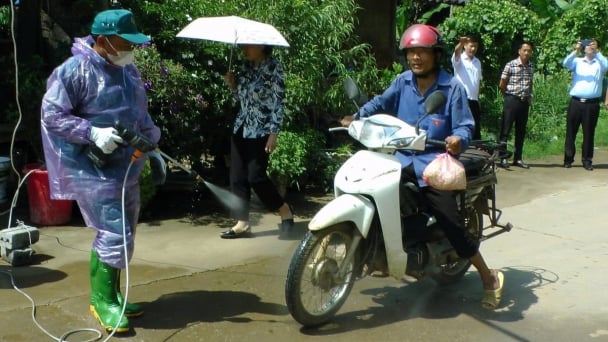
(VAN) On August 1, a working delegation from the Department of Livestock Production and Animal Health inspected ASF prevention and control work in Lao Cai.
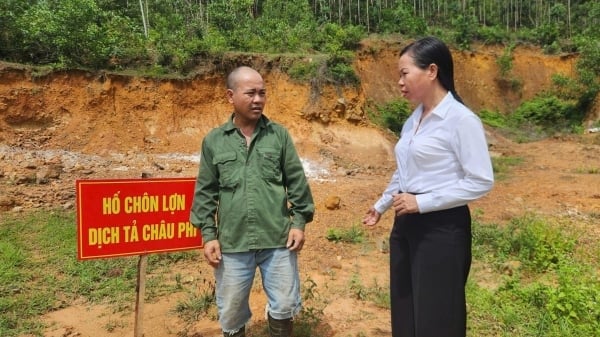
(VAN) The 18 households affected by African swine fever in just half a month demonstrate the danger of this disease and its rapid spread in Binh Khe ward, Quang Ninh.

(VAN) Caffeine enthusiast returns to rural roots, to use his passion to bring prosperity and help save an ecosystem, Yang Feiyue reports.

(VAN) Vn‑WoodID integrates AI and a scientific database to help forest rangers, customs officers and businesses rapidly verify wood species on mobile devices without needing Internet access.
![Golden sea, sustainable vision: [4] Safeguarding resources through knowledge](https://t.ex-cdn.com/nongnghiepmoitruong.vn/608w/files/content/2025/08/04/bien-vang-niem-tin-xanh-bai-4-giu-tai-nguyen-bang-tri-thuc-145947_742-160821.jpeg)
(VAN) Despite institutional support, fishermen must be equipped with the knowledge and skills to protect themselves when facing dangerous situations offshore.

(VAN) Khanh Hoa Sub-Department of Livestock Production and Animal Health recently opened a training session for all cadres, civil servants and public employees on how to use the software to issue online animal quarantine certificates.